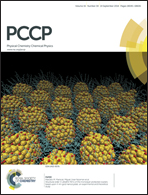Physical origins and suppression of Ag dissolution in GeSx-based ECM cells
Abstract
Electrochemical metallisation (ECM) memory cells potentially suffer from limited memory retention time, which slows down the future commercialisation of this type of data memory. In this work, we investigate Ag/GeSx/Pt redox-based resistive memory cells (ReRAM) with and without an additional Ta barrier layer by time-of-flight secondary ion mass spectrometry (ToF-SIMS), X-ray absorption spectroscopy (XAS) and synchrotron high-energy X-ray diffractometry (XRD) to investigate the physical mechanism behind the shift and/or loss of OFF data retention. Electrical measurements demonstrate the effectiveness and high potential of the diffusion barrier layer in practical applications.



 Please wait while we load your content...
Please wait while we load your content...